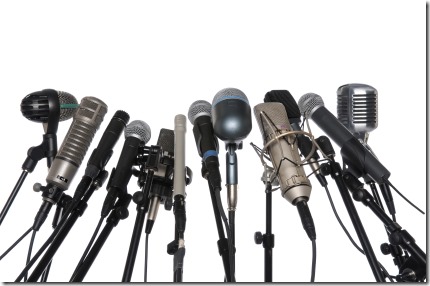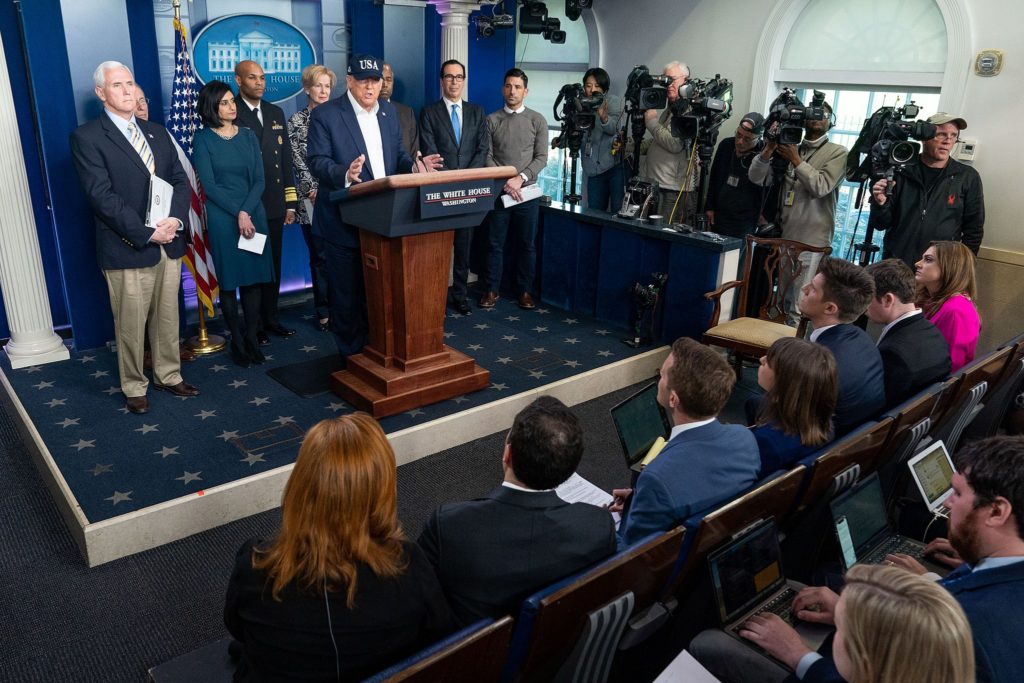How To Handle A Media Scrum During A Crisis
This excellent post was written by Warren Weeks, the principal of Toronto-based Eleven PR.
When it comes to media scrums, there’s good news and bad news.
The good news is that the vast majority of people will make it through their entire careers without finding themselves at the center of one of these stressful, impromptu press conferences.
The bad news is that if you do find yourself suddenly surrounded by a circle of clamoring reporters during a crisis, you will have likely had very little time to prepare.
Handling a scrum definitely falls under the category of advanced media relations. The person tapped to address the media in this situation should have plenty of media training under their belt, as well as a lot of real-world media relations experience. A scrum isn’t for the faint of heart. But if you find yourself in a situation in which the media is descending upon your location and you’re going to need to face them, here are a few tips to help you get through it.
1. Being there is half the battle
Depending on the level of confidence you’re able to convey, just being on the scene of the crisis to address the media can score you some important points. After the Exxon Valdez oil spill in March of 1989, the company’s chairman, Lawrence G. Rawl, sent a series of lower-ranking executives to Alaska to deal with the situation instead of going there himself and taking the lead on the crisis management front. His was a key absence during a notorious disaster that was the result of human error.
During the Stanley Cup riot in 2011, on the other hand, Vancouver Mayor Gregor Robertson faced the media on-site while the riot was still unfolding. Actions can speak louder than words in some instances. And when the chips are down, the presence of a confident leader can be a key ingredient.
2. Confidence is key
While being there can be half the battle, showing up sans confidence is a recipe for disaster. Letting the media run the show, being visibly nervous, sweating, stammering, etc. are all signs that the situation may be slipping out of the company’s control. When you’re engaging with the circle of reporters, you’ll want to convey confidence, decisiveness and leadership. This is where all that media training and advance preparation come in handy.
3. Frame your story in advance
Even if you only have a few minutes to prepare, jot down the three to five key points you want to convey. Be sure to address the big questions people will want answers to. Were there deaths? Injuries? Is the situation under control? What’s the plan for remediation? Have authorities secured the location? And just as importantly, decide which areas/topics you won’t entertain during the scrum interview and have the appropriate bridging phrases at the ready.
4. Provide an update
The first question will usually be general in nature (e.g. “Can you give us an update on the situation?”) This is often a good opportunity to provide a quick overview of what you know. For example, “At 4:16 pm, one of our employees smelled smoke in the main building. They called 911 and the emergency services personnel arrived four minutes later. The firefighters are in the process of getting the situation under control. We’re pleased to inform you that all company personnel are safe and accounted for. We continue to cooperate fully with officials and will provide further updates as information becomes available.”
This is vital information that the media will want to know about and this ‘mini statement’ can help you build your confidence at the outset of the interview.
5. Answer the question behind the question
Be careful about answering the reporters’ questions in a literal manner. This isn’t about being evasive. It’s about realizing there’s often a more important question behind their question that needs to be addressed. For example, if you’re asked how many firefighters are on the scene, will providing a specific number actually be useful to anyone? Are there five? 23? 119?
The literal question is about how many personnel are on the scene. The question behind the question is, “Are the right people on the scene and is the situation under control?” Imagine you’re watching the spokesperson on TV and they get asked about the number of firefighters on the scene. Which is the better answer when it comes to putting the response in context and setting minds at ease?
“Um, fourteen.” or…”We have a full public safety complement of more than a dozen professionals on hand, who are actively working to get the fire under control. And we have the capacity to call upon more emergency services personnel in the unlikely event they are needed.”
6. Use it as a public service announcement
If it makes sense and if the situation can benefit from enlisting the help of the public, use the scrum as a public service announcement. In his scrum during the Stanley Cup riot, Mayor Robertson asked hockey fans and other members of the public to save any photos they had on their smartphones and to send them to the police. Many of them did just that and hundreds of charges have been laid as a result.
7. Create your exit
This isn’t a five-year-old’s birthday party and you’re not a piñata. Once you’ve delivered the information that you have and you’ve given the reporters a chance to ask questions, let them know you have time for one or two more questions. Or let them know specifically when they can expect another update. You may need to state, “This is all the information we have at this point in time. We will have another update for you at 10:00 pm”. Then wind up the interview.
No two scrums will be exactly alike. But as with any other media interaction, preparation and practice are key. The following is an excerpt of the scrum interview that Vancouver’s Mayor Robertson did during the Stanley Cup riot. In this clip, which is just about two minutes in length, you can see him using a number of the techniques described in this post.
Warren Weeks is the principal of the Toronto-based public relations firm Eleven PR. This post originally ran on his blog. He tweets at @ElevenPR.






Terrific post. I hope I never have to be in this situation, but reading the actionable tips and seeing real-life application in the video gives me a clear vision of what to expect and how to respond. I’m drafting a crisis communication plan for a very large public event and the Vancouver situation is one scenario I plan to address. Thank you for sharing your expertise. As alway, I learn so much from Brad and his guest bloggers.
Joyce,
Thank you so much for your nice words. I’m delighted to hear how useful this post is in your own crisis planning – Warren’s piece is a gem.
Thanks for reading!
Brad
Brad – thanks again for including this post on your blog and for the nice words. Much appreciated. WW
Good advice. As a professional media trainer on the other side of the pond I would only add that there are usually dynamics happening in a media doorstop that the interviewee is rarely aware of – the press and radio reporters are pitching to TV news directors whom they know will be watching that night and forming opinions about their tenacity, line of questioning, control of the event etc.
Here in Australia we had a tenacious press reporter working for The Australian newspaper, George Negus. The powers at Channel 9 in Sydney formed opinions about his work from watching him take over at these media doorstops and called him to offer him one of the three reporter jobs at the inaugural Australian 60 Minutes program. Certainly most reporters in Australia know that story and many are trying to be the next George Negus.
As you rightly say – confidence is key!